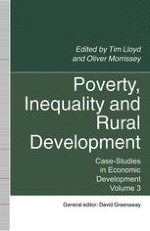1994 | Buch
Poverty, Inequality and Rural Development
Case-Studies in Economic Development, Volume 3
herausgegeben von: Tim Lloyd, Oliver Morrissey
Verlag: Palgrave Macmillan UK
Buchreihe : Case-Studies in Economic Development
Enthalten in: Professional Book Archive
